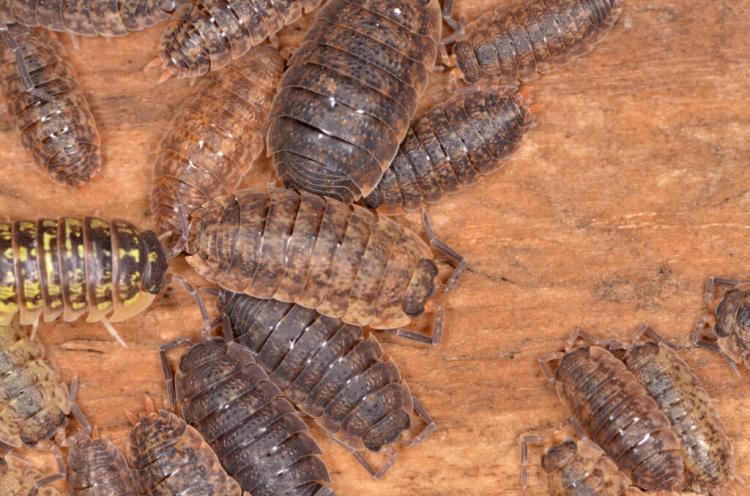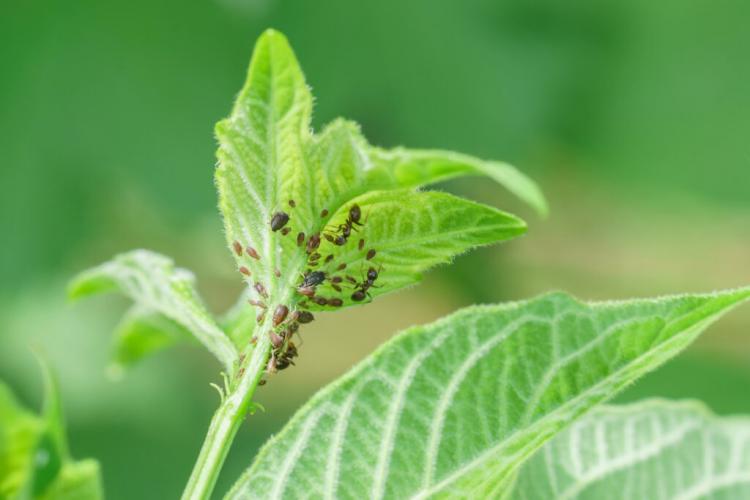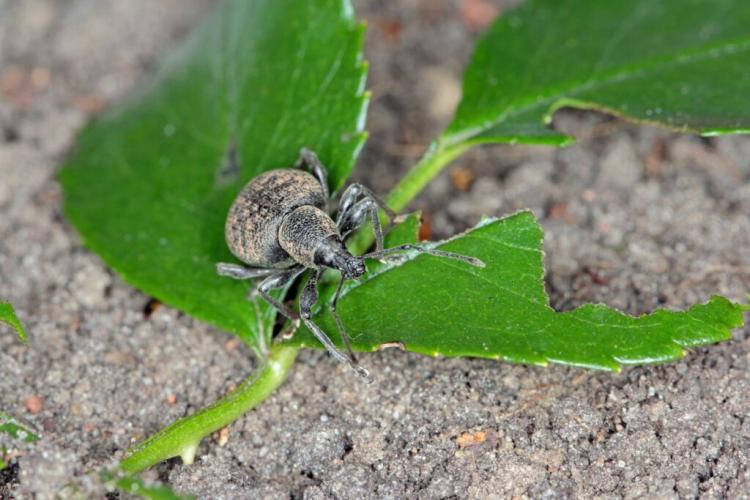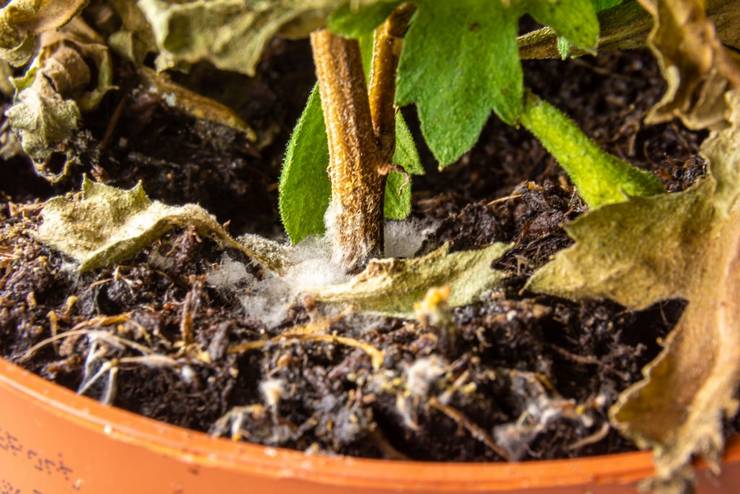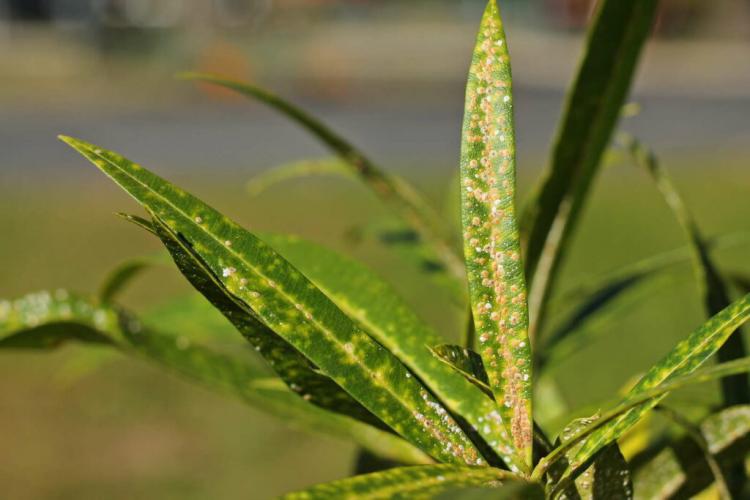Fighting Boxwood Moth : How To Naturally Get Rid Of It
Fight the borer without poison: Here you will find out which effective, natural options are available to you in the fight against the caterpillar.
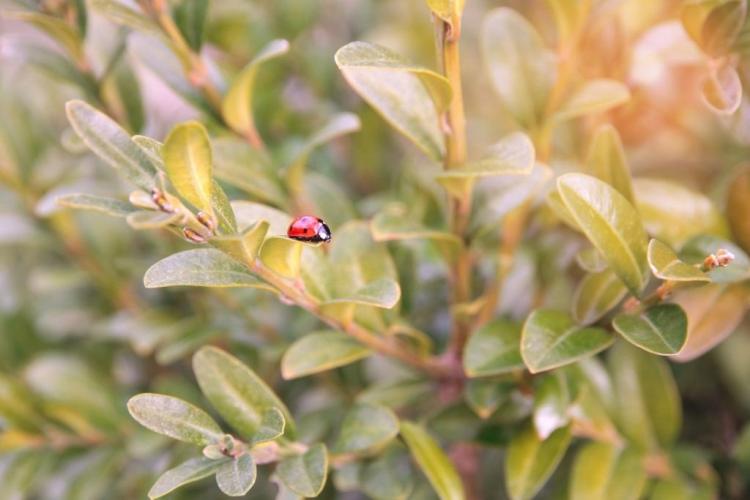
If you want to preserve beneficial organisms like the ladybird, you should fight the borer biologically [Photo: Aisedora / Shutterstock.com]
Just because your box trees (Buxus ) are haunted by the voracious box tree moth (Cydalima perspectalis ), you don’t have to throw all principles overboard. Fighting is also possible without poison and chemicals – if you know how. We have everything you need to know about fighting naturally.
In the following we go into control methods, such as our Plantura borer-free XenTari® with Bacillus thuringiensis , as well as control with neem products, home remedies and beneficial insects. At the end of the article we have summarized again why control with classic insecticides is not recommended.
Fight the box tree moth biologically with XenTari®
Table of Contents
The bacterium Bacillus thuringiensis occurs in the soil and in plants. It has the peculiarity of producing so-called “Bt toxins”. If these bacteria are eaten by insects, the crystalline proteins of the toxin are activated in their intestines. In this way, they can pass through the intestinal wall and enter the hemolymph – the “blood” of the insects. The poisoned insects die within a few days. Before that, further damage is prevented by an immediate feeding stop. The specificity of various bacterial strains is particularly special: many of them form Bt toxins that only damage individual species. In this way, only the desired species of beetles, butterflies, hymenoptera and two-winged birds or nematodes can be controlled in a very targeted manner. The toxins have no effect on humans, other vertebrates or plants, and the substance is completely biodegraded.
Our Plantura moth free XenTari® contains the strain ” Bacillus thuringiensis subspecies aizawai , strain ABTS-1857″. This produces a Bt toxin that only affects caterpillars. Fortunately, you do not have to worry about native butterfly species. Due to the food specialization of butterfly caterpillars, they are not affected by our remedy – that is, it is practically impossible for them to nibble on the poisonous boxwood. Likewise, our Plantura borer-free XenTari® is not harmful to bees, gentle on beneficial insects and completely biodegradable.
XenTari®: Instructions for ideal spreading
If you have opted for our Plantura pothole-free XenTari®, you should note the following when spreading:
- With regular checks between March and September, early and therefore promising treatment is possible. In the case of heavy infestation or precipitation, it may be necessary to repeat the treatment.
- As soon as caterpillars or caterpillar feeding are observed, the affected plants should be completely moistened with the mixed Plantura borer-free XenTari®. The interior of the shrub must not be left out either.
- It should be used at outside temperatures of at least 15 ° C.
- A sachet containing 2 grams of XenTari® is sufficient to treat 33 m² with a bush height of 50 cm. Information on taller shrubs can be found in the enclosed leaflet.
- It is best to apply our Plantura borer-free XenTari® with a spray bottle in order to waste as little of the active ingredient as possible.
- If possible, apply our Plantura borer-free XenTari® when there is no wind and avoid drifting to other plants.
- Our Plantura moth free XenTari® is harmless to humans, however, please note the information on the package insert in the event of inhalation, skin contact, swallowing or eye contact.
Fight the box tree moth with neem products
Pesticides, which are obtained from the seed oil of the tropical neem tree, are permitted in organic farming and can be used against the box tree moth. The insecticidal active ingredient used is called azadirachtin. Highly dosed and heavily prepared products are also considered “organic”. With a little research, however, it is easy to find out that these processed neem products come very close to a classic pesticide. Not only must the same strict safety regulations be observed. These agents are also rated as harmful to predatory mites, various wasps, ladybugs, lacewings, hoverflies and of course fish and their food animals.

The seeds of the neem tree contain several insecticidal ingredients [Photo: Ebfab / Shutterstock.com]
Summary Fighting the box tree moth with neem products:
- Neem products are considered “organic”
- However, many professional neem products are hardly less harmful to non-target organisms (such as other bees or other beneficial insects) than classic pesticides
- Low-dose, simple mixtures of neem oil can work effectively without presenting a comparably high risk
- Neem oil is safe for cats and dogs
Fight the box tree moth with home remedies
There are rumors about various home remedies against the moth. Some tricks work quite well, while others would waste your time. The simple collection of the caterpillars of the boxwood moth, for example, can be regarded as effective in the case of light and medium infestation, even if it is a little laborious. By using the hedge trimmer at the right time, a large proportion of borer eggs and young larvae can be pulled out of the way with one blow. Regular checks – sometimes with pheromone traps – are very important for both approaches. If the caterpillars are free outside, a mixture of oil, vinegar and water can be quite effective against them. The use of a high-pressure cleaner or a nozzle for the garden hose is even easier than the previous household remedies: if you use it to work the boxwood from the inside and outside, you will already be able to record a noticeable success even with severe infestation.
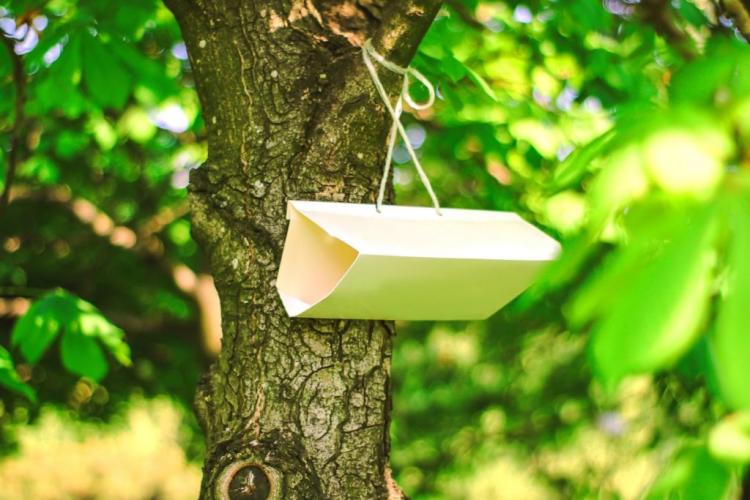
Pheromone traps help identify the right time to control it [Photo: mayk.75 / Shutterstock.com]
Tip: If you are still looking for a pheromone trap, then take a look at our Plantura shop. There you can buy the Plantura moth trap, which attracts the male moths with the help of attractants and thus serves for the early detection of a moth infestation.
Nets are used prophylactically to prevent the moth from laying eggs on its own bush. If this chance has passed, the pests can still be grilled with a dark garbage bag on a sunny day. You can find all the important information about fighting the borer with home remedies in our special article. However, if the infestation pressure is high and the bush is severely damaged, we recommend choosing an effective biological agent to save your box trees.
Summary Fighting the box tree moth with home remedies:
- Not every home remedy described as effective has an effect on the box tree moth
- However, many simple methods can be very effective
- Collecting, removing by cutting, hosing down, and using nets and dark garbage bags may be sufficient to prevent or minimize infestation
- Heavy infestations should be treated with an effective biological agent to protect your plants
Tip – Is the boxwood moth poisonous: The boxwood moth caterpillars are poisonous to (almost) everyone who puts them in the mouth. This is solely due to the fact that they consume boxwood, which is also poisonous for us, and even store some of its toxins. You can read more about the toxicity of the borer here. If you have overcome yourself and touched and picked up the little caterpillar, you can find out here how to dispose of the box tree moth.
Fight the box tree moth with beneficial insects
An old friend from the biological pest management can take care of the voracious caterpillars. Nematodes of the Steinernema carpocapsae species can even parasitize and thus eliminate the moth caterpillars feeding on webs using a special application method including adhesive and swelling agent. Find out more about the use of nematodes as beneficial insects in this article.
In addition, it looks like the local fauna is getting used to the new roommate. Wasps and some garden birds – tits, sparrows, redstart and starlings – have already been observed eating the caterpillars and moths.
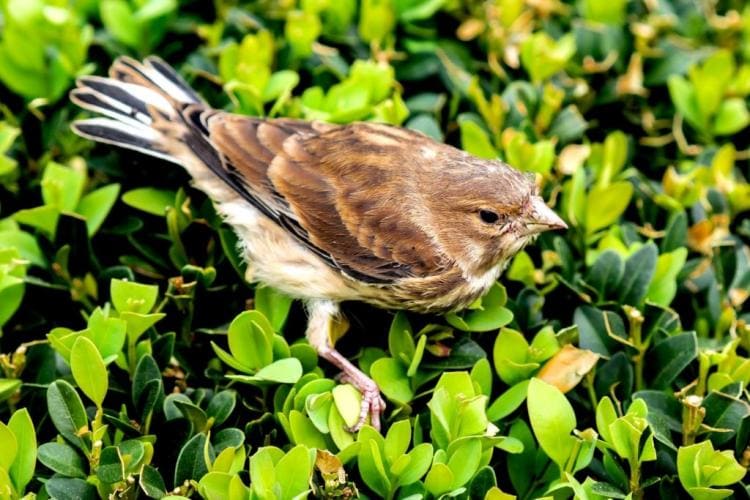
Sparrows ( Passer domesticus ) are gradually getting a taste for the moth [Photo: Tatiana Zinchenko / Shutterstock.com]
It is possible that the feathered helpers adapt to the toxicity of the moth and so finally a natural opponent appears. The promotion of these potential helpers is the most future-oriented measure to combat borer.
Summary Fighting the box tree moth with beneficial insects:
- Nematodes of the species Steinernema carpocapsae can parasitize borer caterpillars; However, this is only possible in combination with a process specially developed for this purpose
- Encouraging native wasps and birds can help get the borer problem under control in the long term; In the case of acute infestation, biological sprays are definitely preferable
Why not fight the moth with poison?
Chemical, conventional pesticides seem to many people affected by insect pests in the garden to be the only fast and effective weapon – also against the box tree moth. Undoubtedly, the application is often quick and the effect is satisfactory. However, it also has a number of disadvantages, which is why we recommend using biological agents such as our Plantura borer-free XenTari®.
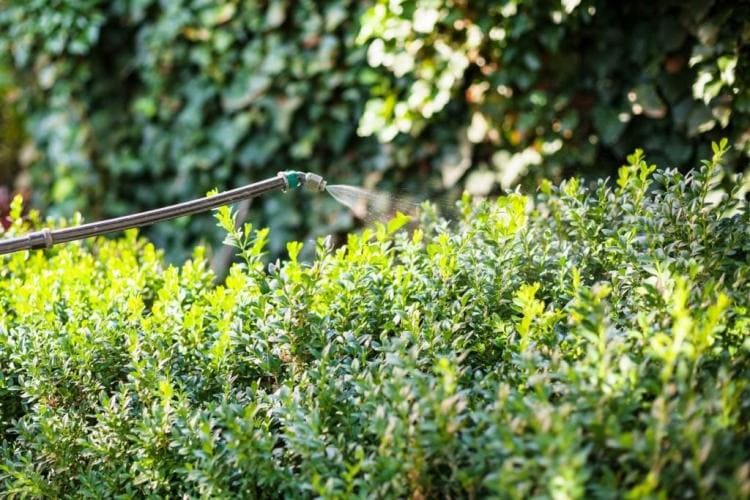
There is some alternative to distributing pesticides in your own garden [Photo: vvoe / Shutterstock.com]
Aside from the effort chemical agents put into application and disposal, they can be harmful to a variety of non-target organisms. This refers to organisms that the user actually does not want to be combated. Useful ground beetles, ladybirds, lacewings, predatory mites and brackish wasps as well as various pollinator insects such as bees are more or less susceptible to these agents. Often consumers only pay attention to the information about the bee endangerment. However, various agents protect bees, but damage other groups of insects. With their activity, these are not only part of the ecosystem, but also act as important opponents for pests in our gardens. In addition, these poisons must never get into water, either directly or via the sewer system, drains or canals. Because they are harmful to the smallest aquatic organisms, which are the important basis of food chains. In any case, all points together are weighty enough to attempt to combat it without chemicals and to rely on biological alternatives that are just as effective.
Summary: Why fight the moth without chemicals?
- The use of chemical pesticides is quick and effective
- Disadvantages are the high cost and the damage that can occur to the environment or users
- The damage to beneficial insects leads to greater problems with in turn other pests that were previously kept in check by those beneficial insects
- Alternatives are biological pesticides, which are in no way inferior to conventional products in terms of effectiveness, but are much more gentle on the garden and the environment
You can find more about the active ingredient XenTari® ( Bacillus thuringiensis ) here in a special article.

